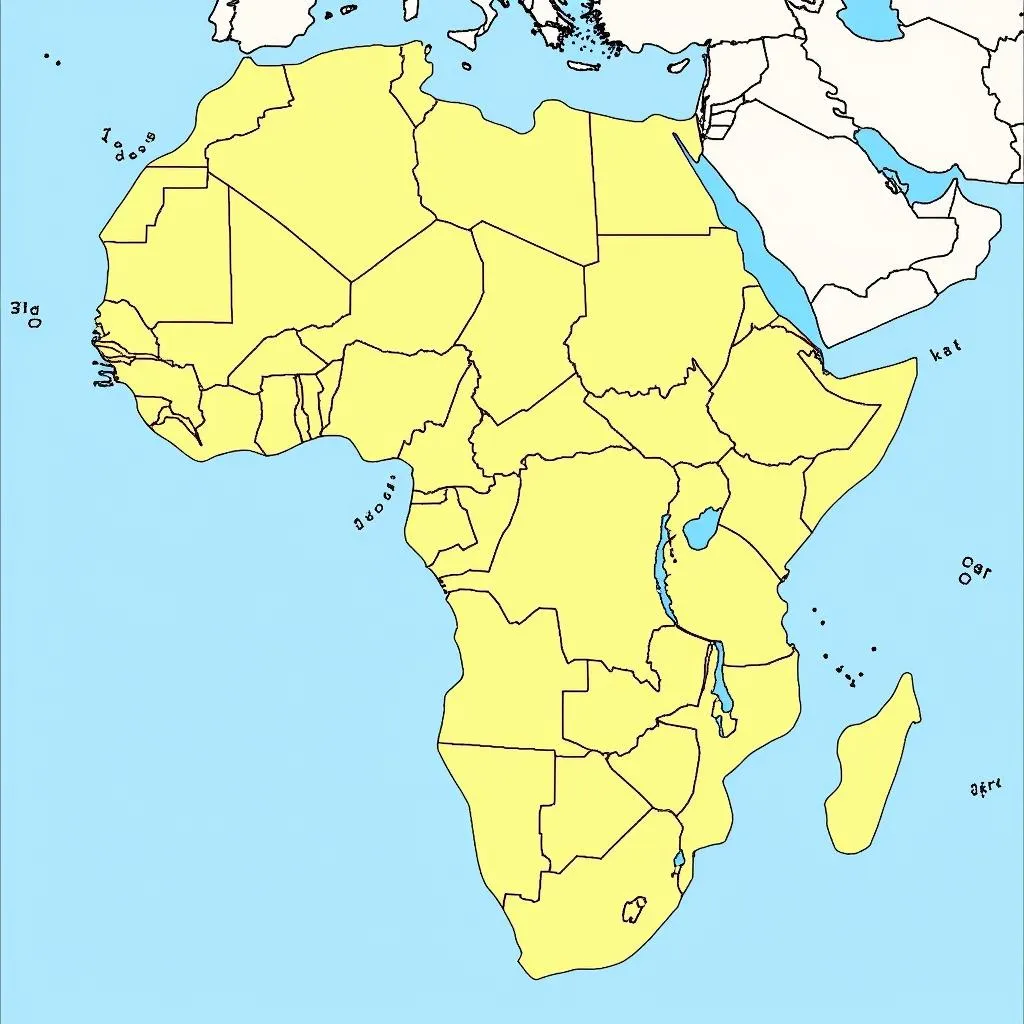African Elephant Location: Where to Find these Gentle Giants
African Elephant Location is a key question for anyone hoping to witness these majestic creatures in their natural habitat. Understanding their distribution across the African continent is essential for planning a successful wildlife viewing experience. This article will explore the various regions where African elephants reside, the factors influencing their distribution, and some tips for observing them responsibly.
Where do African elephants live? They are found in a variety of habitats south of the Sahara Desert, from lush forests to open savannas. Knowing the specific regions within these habitats is crucial for maximizing your chances of encountering these magnificent animals. Let’s dive deeper into the specific locations and discover what makes each unique.
Exploring African Elephant Habitats
African elephants inhabit a surprisingly diverse range of environments across sub-Saharan Africa. This adaptability allows them to thrive in various ecosystems, each offering unique challenges and resources.
Savanna Elephants
The vast savannas of East and Southern Africa are home to the largest populations of African elephants. Countries like Kenya, Tanzania, Botswana, and South Africa boast substantial herds, making these popular destinations for elephant viewing. Within these savannas, elephants are drawn to areas with access to water sources and abundant vegetation.
The open grasslands provide ample grazing opportunities, while the scattered trees offer shade and protection from the sun. Their presence plays a vital role in shaping the savanna landscape, creating pathways and clearing vegetation that benefits other species. A 5 star African safari offers an unparalleled opportunity to witness these gentle giants roaming the savannas.
Forest Elephants
Forest elephants, a distinct subspecies, inhabit the dense rainforests of Central and West Africa. Countries such as Gabon, the Democratic Republic of Congo, and Cameroon are known for their forest elephant populations. These elephants are smaller than their savanna counterparts and have adapted to navigate the dense vegetation of their rainforest home.
Their ecological role within the forest is crucial, as they disperse seeds and create clearings that promote biodiversity. Tracking these elusive creatures through the dense foliage is a unique and challenging experience. If you’re looking for an immersive experience within these unique environments, you should consider exploring African forest lodges.
Factors Influencing African Elephant Distribution
Several factors dictate where African elephants can be found. Understanding these factors is vital for appreciating the complexities of their distribution.
Water Availability
Water is essential for elephant survival, and their distribution is heavily influenced by the availability of reliable water sources. During dry seasons, elephants congregate around rivers, lakes, and waterholes, creating opportunities for exceptional wildlife viewing.
Vegetation and Food Sources
Elephants are herbivores with enormous appetites, consuming vast quantities of vegetation daily. Their distribution is linked to areas with sufficient food sources, such as grasses, leaves, and fruits.
Human-Wildlife Conflict
Sadly, human encroachment and habitat loss due to expanding agriculture and infrastructure development pose significant threats to elephant populations. Understanding these challenges helps in supporting conservation efforts and responsible tourism.
Tips for Observing African Elephants Responsibly
Observing these magnificent creatures in their natural environment is a privilege that comes with responsibility. Here are some tips for ensuring your elephant encounter is ethical and sustainable.
-
Choose reputable tour operators: Select operators committed to responsible tourism practices, minimizing disturbance to elephants and their habitat.
-
Maintain a safe distance: Respect the elephants’ space and avoid approaching them too closely.
-
Do not feed the elephants: Feeding elephants can disrupt their natural foraging behavior and create dependence on humans.
-
Support conservation efforts: Contribute to organizations working to protect elephants and their habitats.
Conclusion
Understanding African elephant location is essential for experiencing these incredible animals in the wild. By respecting their habitats and supporting conservation efforts, we can ensure that future generations have the opportunity to witness the majesty of African elephants in their natural environment. Remember to choose reputable tour operators and follow ethical guidelines when observing these gentle giants. Did you know you can even find treats inspired by the African continent, such as African kids oreo? This could be a fun way to introduce younger audiences to the wonders of Africa!
FAQs
- Where can I see the largest populations of African elephants? East and Southern Africa, specifically countries like Kenya, Tanzania, Botswana, and South Africa.
- What is the difference between savanna and forest elephants? Forest elephants are smaller, have straighter tusks, and are adapted to dense rainforest environments.
- What are the main threats to African elephants? Habitat loss, poaching, and human-wildlife conflict.
- How can I contribute to elephant conservation? Support reputable organizations working to protect elephants and their habitat.
- What should I do if I encounter an elephant in the wild? Maintain a safe distance, avoid making sudden movements, and do not approach or feed the elephant.
- What are some good resources for learning more about African elephants? Reputable wildlife conservation organizations and scientific journals.
- Are there any ethical considerations for elephant tourism? Choose responsible tour operators who prioritize the well-being of the animals and their environment.
Other Questions You Might Have
- What are the social structures of elephant herds?
- How do elephants communicate with each other?
- What is the role of elephants in their ecosystem?
For more information about traveling to Africa, check out resources about the African continent map Sahara Desert.
Further Exploration on African Life
If you enjoyed this article and want to discover more about the incredible wildlife of Africa, consider reading our related articles: African buffalo safari animals.
Need assistance planning your African elephant adventure? Contact us 24/7: Phone: +255768904061, Email: kaka.mag@gmail.com, or visit us at Mbarali DC Mawindi, Kangaga, Tanzania.


